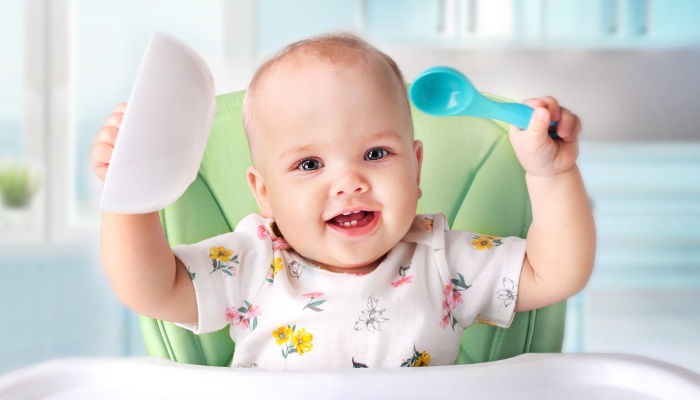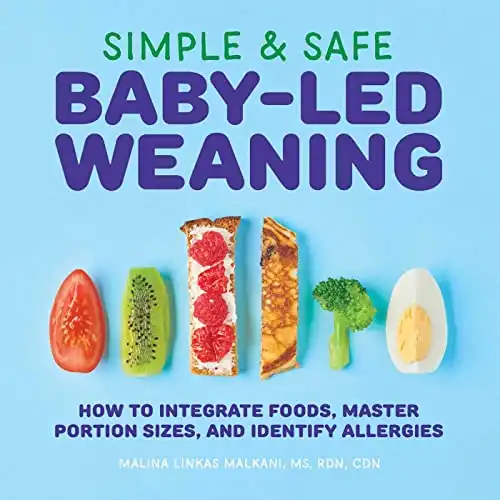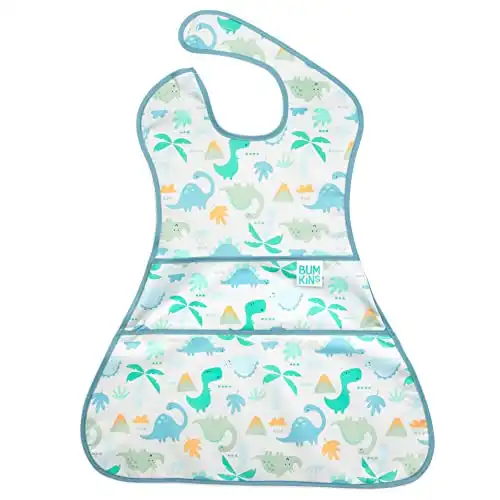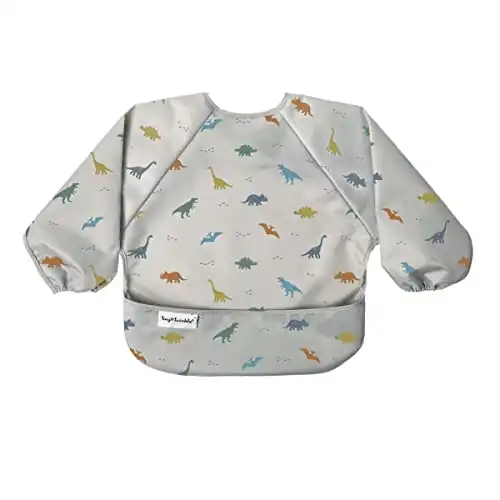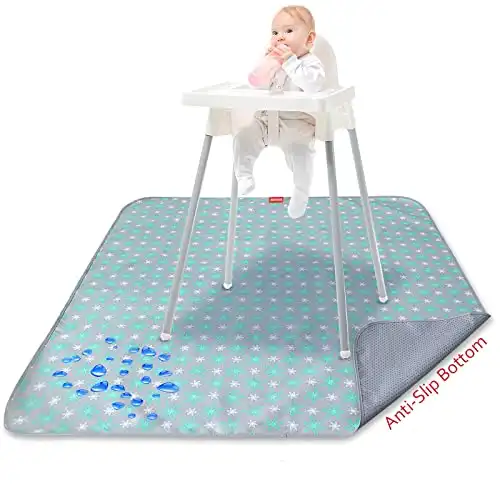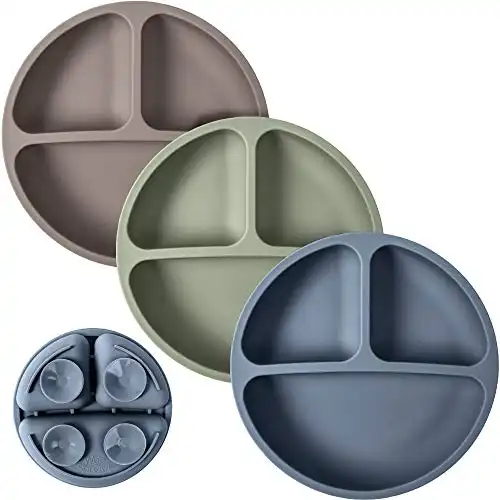To successfully expose your infant to 100 different foods by the age of 1, include a diverse selection of fruits, vegetables, meats, proteins, starches, legumes, baked goods, and prepared foods during meal and snack times.
Try to introduce 5 or 6 new foods each week to meet your goal in 20 weeks or less.
The point of 100 foods before 1 is to encourage your baby to explore new foods in a relaxed manner to prevent picky eating and improve oral and fine motor skills.
You will reach your goal of 100 new foods in no time, and your baby will benefit from the varied diet and the introduction of many different foods.
According to Frontiers in Pediatrics, the early introduction of a wide variety of solid foods “may increase their willingness to eat a variety of fruits and vegetables later in life, decrease their risk of having feeding problems later in life, and decrease their risk of developing food allergies.”
Table of Contents
100 Foods Before 1 List
One hundred foods seem like a lot, but it is a lot more manageable than you think!
If your baby is eating plenty of well-rounded meals with proteins, veggies, and fruits, you will reach that number in no time.
FREE 100 Foods Before 1 PDF Checklist
Here is a list of some of the most common foods to give a baby in the first year.
Fruits
- Banana
- Apple
- Oranges
- Mangoes
- Peaches
- Pears
- Grapes
- Strawberries
- Raspberries
- Avocado
- Plantain
- Pomegranate
- Blueberries (smashed)
- Cantaloupe
- Cucumber
- Watermelon
- Honeydew
- Pineapple
- Kiwi
- Coconut
- Prunes
- Blackberry
- Mandarin orange/clementines
- Nectarine
- Plum
- Tamarind
- Grapefruit
- Apricot
- Lemon
- Dates
Vegetables
- Green beans
- Broccoli
- Carrots
- Cauliflower
- Squash — spaghetti squash, acorn squash, yellow squash, zucchini
- Pumpkin
- Romaine lettuce
- Mushrooms
- Sweet potato/yams
- Corn
- Cactus
- Tomato
- Garlic
- Bell pepper
- Asparagus
- Kale
- Beet
- Eggplant
- Collard greens
- Brussels sprouts
- Artichoke
- Onion
- Spinach
- Celery
Meats and Proteins
- Chicken
- Turkey
- Ham
- Pork
- Beef
- Steak
- Bacon
- Venison
- Bison
- Lamb
- Tofu
- Egg
- Cheeses — mozzarella, parmesan, string, Colby, etc.
- Cottage cheese
- Fish — trout, salmon, tilapia, sardines, etc.
- Crab
- Bone broth
Starches
- Potatoes
- Pasta
- Rice
- Quinoa
- Couscous
- Millet
- Flaxseed
- Oatmeal
- Wheat
Legumes
- Black beans
- Kidney beans
- Pinto beans
- Lentils
- Peas — black-eyed peas, green peas, chickpeas, etc.
- Green beans
- Edamame
- Cannellini/Great Northern beans
- Lima bean
Baked Goods
- Bread/toast
- Bagels
- Muffins
Prepared Foods
- Nut butters (peanut, almond, cashew)
- Pesto
- Yogurt
- Whole grain crackers
- Cereal
- Pancakes, waffles, French toast
- Soup/chili
- Fruit and vegetable smoothies
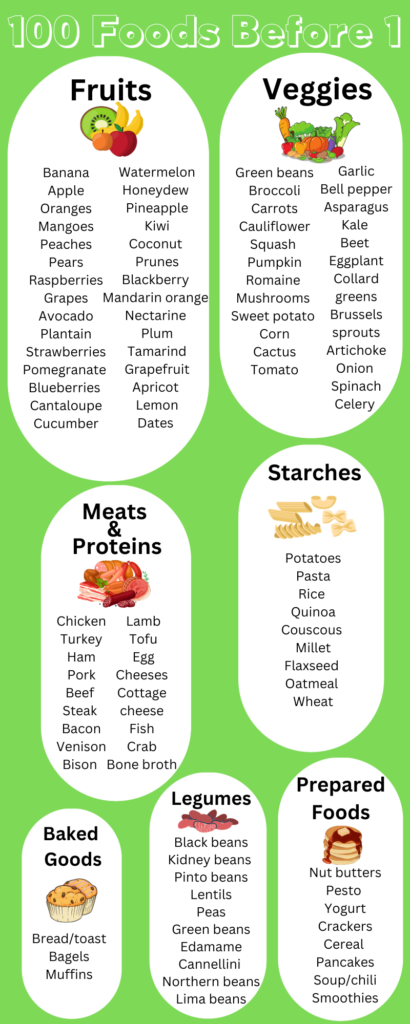
Foods To Avoid or Limit in the First Year
- Honey
- Raw baby carrots
- Raw apple quarters
- Hot dogs
- Breakfast sausage links
- Whole grapes
- Whole or frozen blueberries
- Raw and smoked fish
- Loose corn kernels
- Popcorn
- Whole nuts and seeds
- Dried fruit
- Shrimp
- Tuna
- Raw milk cheese
- String cheese
- Extremely processed American cheese
- Store-bought macaroni and cheese
- Soy sauce
- Instant ramen noodles
- Instant pudding
- Potato and tortilla chips
- Juice and soda
- Candy and chocolate
How To Introduce 100 Foods in the First Year
This is a popular new trend among the BLW population. Introducing your baby to 100 foods in their first year is a huge achievement!
It may seem daunting, but it is a lot easier than you think.
Planning
Meal planning can be a huge lifesaver, and it will ensure that your baby is getting a variety of foods rather than the same go-to meals that you make when you are in a pinch.
I found it helpful to choose a few foods I wanted to introduce my baby to that week and then find several recipes that used most of the same ingredients to avoid food waste and keep my grocery bill manageable!
Record Keeping
If you are going for the 100 Foods Before 1 challenge, it is essential to keep a running list of all the different foods that your baby eats.
This is easiest when done in the notes section of your phone, but you can use an ordinary notebook and pen if you prefer.
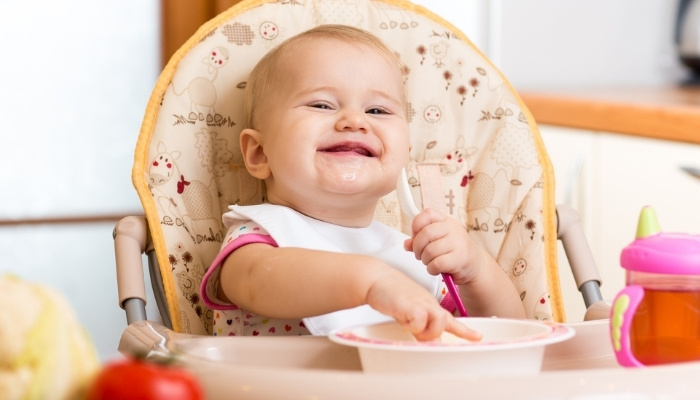
Baby-Led Weaning at a Glance
So, what is baby-led weaning? How do you get started? Let’s explore just what this feeding method entails.
What It Means
Basically, baby-led weaning is a method of transitioning babies to solid foods where parents skip purees and spoon-feeding entirely and follow their baby’s lead as they begin to introduce him to real, solid foods.
There is a greater emphasis on allowing the baby to feed himself foods that are cut appropriately for his age.
Benefits
Parents are finding many benefits that come from following the principles of baby-led weaning.
These are only a handful of the reasons that BLW is effective and becoming very popular, very quickly.
- It fosters independence.
- Parents have seen a decrease in picky eaters.
- Babies learn to control their appetite and learn when they are full.
- It makes parents’ lives a little easier! Babies eat the same meals as their parents; meals are only modified slightly to enable them to grasp and eat the food easily.
- It could save you money. No more expensive jars or pouches.
- It enhances development by giving babies the opportunity to practice critical oral and motor skills.
Time To Start
Beginning solid foods is a fun and exciting milestone, but when is the right time to start?
Most healthy, full-term babies are ready to start around 6 months of age, but you should always wait for your baby to show signs of readiness.
Follow their lead, and watch for cues in all matters of introducing solid food.
Baby Readiness Signs
There are certain readiness signs that need to be in place before you can start solids with your baby.
These signs ensure safety and the physical capabilities of handling solid food.
If your baby is demonstrating all of these signs and you have discussed it with your child’s pediatrician, you are safe to give BLW a go!
- Baby is able to sit up unsupported
- Baby has adequate head control and can hold head upright and steady.
- Baby can easily reach for objects, grab them, and bring them to his mouth.
- Baby demonstrates interest in food. He watches when you eat, mouths for food, and leans into it.
Safety Guidelines
One of parents’ worst fears is having their baby choke on food.
This fear can cause a lot of anxiety and stress when your baby first starts eating solid food.
Parents are often skeptical of BLW and the risk of choking on solid food because purees seem so much safer.
However, research shows that babies who eat solid foods are no more likely to choke than those who are spoon-fed.
However, while BLW is perfectly safe for your child, you should always be attentive and mindful of what your baby is doing while eating.
Here are a few safety guidelines to keep in mind:
- Sit the baby in an upright high chair, preferably with a foot plate. Having a detachable tray is helpful for bringing the baby all the way to the table with you.
- Offer large pieces of food that your baby can grab easily and hold onto. As their pinscher grasp develops, you can reduce the size of the food offered.
- Try to avoid putting your finger into the baby’s mouth to remove food. If they eat a piece that is too big, teach them to spit it out by sticking out your tongue dramatically.
- Know the difference between gagging and choking. If your baby is gagging, they will make a noise, maybe cough, and use their gag reflex to get the food out of their mouth. If your baby is choking, it will be silent. You will not hear breathing sounds, he will not be coughing, and he may start to turn blue. When this happens, perform back blows immediately, and contact paramedics while performing CPR if necessary.
- You want to keep an eye on your baby while eating, but don’t put too much pressure on them. Let them enjoy discovering new foods and textures. Learn to use the eyes that all mothers have in the back of their heads!
Recommended Gear
Baby-led weaning, while so valuable and fun, can be extremely messy.
Having the appropriate gear is so helpful and can make your life a little bit easier!
1. Simple & Safe Baby-Led Weaning Book
- 5,000+ reviews on Amazon
- Complete overview of how baby-led weaning works
- Safety guidelines on prohibited foods and smart kitchen habits
- Guidance on identifying allergies
Written by best-selling author and dietician Malina Malkani, this book will give you tons of great preparation and meal ideas as you explore baby-led weaning while doing it safely.
2. Bumkins SuperBib
- Adjustable and tug-proof fit
- Soft yet durable design
- Machine washable
These machine-washable bibs are a MUST!
They are extremely helpful because they catch some of the food that your baby will drop and reduce the mess that you have to clean off of the baby, the highchair, and the floor.
3. Tiny Twinkle Full-Sleeve Smock
- 25+ designs/patterns
- Sizes from 6mo-24mo
- Tug-proof and machine washable
If you are wanting full coverage, opt for these smocks instead of bibs.
They are great for keeping clothes clean while the baby is eating! The best part is that they are machine washable!
4. Moonsea Splat Mat
- Wipeable and machine washable
- Waterproof membrane
- Non-slip bottom
BLW can get MESSY. There will be food everywhere, including on the floor.
Having a mat under the highchair to catch the food makes cleanup so much easier and faster.
This mat is the perfect size to cover a decent area around the highchair and is machine-washable for easy cleaning.
5. WeeSprout Suction Plates
- Great for BLW!
- 4 suction cups for extra grip
- Available with or without lids
Helping babies learn to use utensils is important.
Having a plate that sticks to the highchair makes it difficult for the baby to move it, throw it, or knock it to the ground.
6. Additional Items To Have on Hand
- Wipes or a clean, wet rag for cleaning
- Natural cleaning solution
- Extra silicone utensils
- Phone/camera for pictures
Tips for Getting Started
Once you decide to start, the next step, which is probably the hardest, is actually getting started!
Don’t feel overwhelmed or inadequate. Before you know it, you’ll be a pro, and your baby will be enjoying a variety of foods!
- Do your research, and know how to modify foods appropriately for your baby. Solid Starts is an amazing resource. Their free app provides serving and cutting instructions for every food imaginable depending on your baby’s age, and you can access hundreds of healthy BLW recipes for every meal of the day.
- Tell your family about your desire to do BLW, and expect a little pushback. Teach them the benefits, and help them to see that it is helpful and safe for your baby to self-feed and eat real foods.
- Prepare for messes!
- Meal prep is so much easier when you have things prepared and ideas for a variety of meals each week.
- Trust your baby. It will be scary at first. Always keep an eye on them, and be prepared in the case of an emergency, but you will be surprised at how easily they pick up eating.
- Have fun!
Charlynn is an educator and mom to fraternal boy/girl twins. She loves learning through the experiences she has with her littles and using her knowledge to help other moms as they embark on the journey of motherhood.

